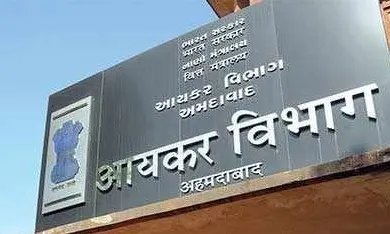How Have India's Direct Tax Collections More Than Doubled?

Synopsis
Key Takeaways
- Direct tax collections have more than doubled in five years.
- 36% increase in Income Tax returns filed.
- Total gross direct tax collection reached Rs 27.02 lakh crore in FY 2024-25.
- Technology-driven initiatives have enhanced taxpayer compliance.
- Faceless Assessment Scheme promotes transparency and efficiency.
New Delhi, July 25 (NationPress) India's total gross direct tax collections (before adjustments for refunds) have more than doubled over the past five years, showcasing the country's significant economic growth and enhanced tax compliance, spurred by the advent of cutting-edge digital technology.
The remarkable surge in collections is supported by a 36% increase in the number of Income Tax returns submitted during this period, with approximately 9.19 crore ITRs filed in FY 2024-25 compared to 6.72 crore in FY 2020-21, attributed to a robust expansion in the taxpayer demographic.
According to the Finance Ministry, the nation's total gross direct tax collections stood at Rs. 12.31 lakh crore in 2020-21, escalating to Rs. 16.34 lakh crore in the fiscal year 2021-22.
This upward trend persisted in 2022-23 and 2023-24, as the figures climbed to Rs 19.72 lakh crore and Rs 23.38 lakh crore, respectively. This growth is attributed to a combination of economic recovery and enhanced efficiency in tax collection, as per an official statement.
By FY 2024-25, the total gross direct tax collections soared to a remarkable Rs 27.02 lakh crore, reflecting the strength of the Indian economy alongside improved taxpayer compliance and government initiatives aimed at broadening the tax base.
The Indian tax ecosystem has experienced substantial growth via various technology-driven initiatives over time. The current PAN series was introduced in 1995, offering benefits such as unique identification and information matching, which contributed to the expansion of the tax base. The linking of PAN with Aadhaar in 2017 was a significant step to enhance compliance and eliminate duplication.
Recent initiatives such as the establishment of the Centralized Processing Centre (CPC) in 2009 and the TDS Reconciliation Analysis and Correction Enabling System (TRACES) in 2012 have facilitated automated processing of ITRs, issuance of refunds, and resolution of Tax Deducted at Source (TDS) mismatches.
The launch of Tax Information Network (TIN) 2.0, a new tax payment platform, has set new standards. With various payment modes, real-time tax credit, and expedited refund processing, the department has streamlined operations while providing taxpayers with greater flexibility and convenience.
The creation of the Demand Facilitation Centre in Mysuru has established a central repository for outstanding tax demands, serving as a single reference point for both taxpayers and departmental officers.
Over the last decade, in alignment with global technological advancements, the Income Tax Department (ITD) initiated PROJECT INSIGHT, which constructs an integrated data repository, creating a '360-degree profile' for each taxpayer. This Data Warehousing and Business Intelligence platform marks a significant shift in how the department utilizes data analytics to enhance compliance and expand the tax base.
Additionally, the Faceless Assessment Scheme, introduced in 2019, aims to improve transparency, efficiency, and accountability by removing the physical interface between taxpayers and tax officers through features like Automated Random Allocation and Electronic Communication.
The Annual Information Statement (AIS) was launched on the Compliance Portal of the Income Tax website in November 2021, providing a comprehensive overview of taxpayers’ financial activities for the fiscal year, including records related to Tax Deducted at Source (TDS), Tax Collected at Source (TCS), stock market transactions, mutual fund investments, and other pertinent financial data.
Moreover, the rollout of pre-filled returns, enabled by the AIS and Taxpayer Information Summaries (TIS), simplifies the process of filing returns.
NUDGE, which stands for Non-Intrusive Usage of Data to Guide and Enable Taxpayers, has also been introduced, drawing from behavioral economics and psychology to subtly influence taxpayer behavior without restricting their freedom of choice.
Furthermore, Section 139(8A), added by the Finance Act, 2022, allows taxpayers to file an updated Income Tax return within 24 months from the end of the relevant assessment year, effective from April 1, 2022.





